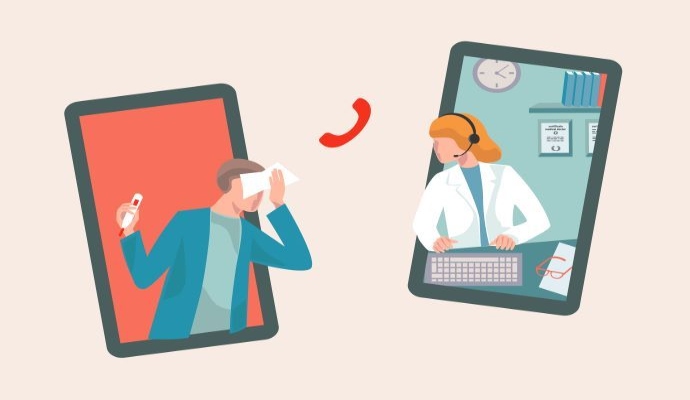Mental health conditions remain top telehealth diagnosis nationwide
FAIR Health data shows that mental health conditions topped the telehealth diagnosis list in January, accounting for 66.3 percent of telehealth claim lines.

Source: Getty Images
- Mental health conditions ranked No. 1 on the list of top telehealth diagnoses nationally and in every United States region in January, according to new FAIR Health data.
FAIR Health published data from its Monthly Telehealth Regional Tracker for January 2024 earlier this week. This marks its fifth year of reporting the monthly evolution of telehealth. The data represents the privately insured population, excluding Medicare Fee-for-Service, Medicare Advantage, and Medicaid beneficiaries.
Overall, telehealth accounted for 4.8 percent of all medical claim lines nationally. Telehealth use varies by US region, ranging from a high of 6.3 percent of all medical claim lines in the West to a low of 3.6 percent in the South. Telehealth encompassed 5.9 percent of all medical claim lines in the Northeast and 4.1 percent in the Midwest.
Mental health conditions accounted for the largest share (66.3 percent) of telehealth claim lines nationally. It was also the top telehealth diagnosis in every region, ranging from 75.3 percent of all telehealth claim lines in the Northeast to 56 percent in the South.
Mental health conditions were followed by acute respiratory diseases and infections, which comprised 3.1 percent of telehealth claim lines nationally, and patient examination encounters, which accounted for 2 percent. COVID-19 made the top five telehealth diagnoses list in only the Northeast, ranking fourth, accounting for 1.3 percent of telehealth claim lines.
Among mental health conditions, generalized anxiety disorder was the top telemental health diagnosis nationally and in all US regions. It accounted for 34 percent of telemental health claim lines nationally. Regionally, generalized anxiety disorder represented the largest share of telemental health claim lines in the Northeast at 38.1 percent.
Major depressive disorder and adjustment disorders followed generalized anxiety disorder, representing 22.2 percent and 16.5 percent, respectively, of telemental health claim lines nationally. Attention-deficit/hyperactivity disorder (ADHD) was ranked fourth on the list, accounting for 9 percent of telemental health claim lines, and post-traumatic stress disorder (PTSD) ranked fifth, encompassing 5.4 percent.
The top five mental health diagnoses were the same in three of the four US regions. The South was the only region where bipolar disorder ranked at No. 5, while PTSD ranked fifth in the other regions.
Social workers were the top provider specialty using telehealth nationally, accounting for 34.5 percent of all telehealth claim lines. Family practice physicians and psychiatrists followed, encompassing 9.8 percent and 8.7 percent of telehealth claim lines, respectively.
The tracker also gathers data on telehealth usage across age groups. The 31- to 40-year-old age group accounted for the largest share of telehealth claim lines nationally, encompassing 26 percent. The 19- to 30-year-old age group followed closely behind, accounting for 25.1 percent of telehealth claim lines.
These age groups dominated the US regions as well, with the 31- to 40-year-old age group encompassing the largest share of telehealth claim lines in the South and West and the 19- to 30-year-old age group accounting for the largest share in the Midwest and Northeast.
The new data aligns with recent research showing telehealth is widely used in delivering mental healthcare services.
Data from Epic Research shows that mental health has continued to rank highest among the specialties still using telehealth widely in 2023. The researchers analyzed 475 million telehealth and in-person visits between the second quarter (Q2) of 2019 and the third quarter (Q3) of 2023.
They found that the overall proportion of telehealth dropped nearly 25 percentage points from peak usage in Q2 2020 to 5.8 percent of all visits in Q3 2023. However, 37 percent of mental health visits were still occurring virtually in the same quarter in 2023.
